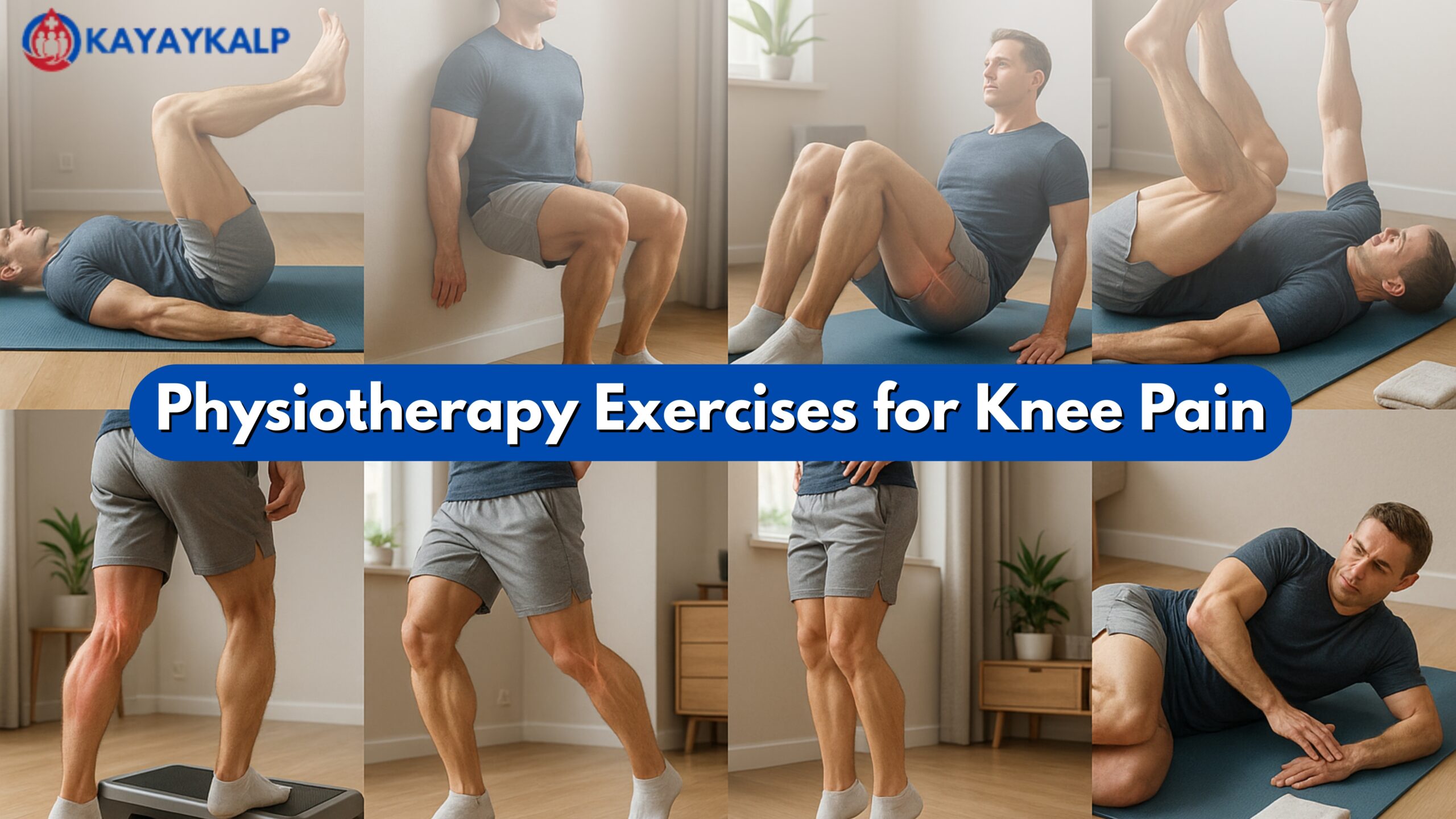Best Physiotherapy Exercises for Knee Pain Relief at Home
Knee pain is a frequent complaint among individuals of all ages. Whether brought on by injury, arthritis or just everyday wear and tear, it can make walking, climbing stairs or even sitting a challenge. The good news is, a number of physiotherapy exercises for knee pain can help to ease pain, gain in mobility and strength the muscles around your knee – all from the comfort of home. These routines aim to strength, flexibility and stability. It’s always best to check with a physiotherapist before getting started, especially if your pain is intense or chronic.
Why Physiotherapy Exercises for Knee Pain Work
The knee is a complex joint that depends on the balanced coordination of muscles, tendons, and ligaments to function properly. When any part of this system becomes weak or stiff, it can lead to discomfort and long-term pain issues. This is where Physiotherapy Exercises for Knee Pain make a real difference. These exercises help strengthen the muscles around the knee, improve flexibility, and enhance overall joint stability. With consistent practice, they not only reduce pain but also help prevent future injuries. At KayaKalp, we follow a holistic approach to healing. Our aim is to address the root cause of knee pain rather than offering temporary solutions. Through evidence-based techniques and personalized exercise programs, we help patients regain mobility, reduce discomfort, and improve long-term joint health.
Straight Leg Raises
One of the easiest and best exercises for knee pain is the straight leg raise. To get the move, lay on your back with one bent knee and the other extended straight. Gently raise the straight leg up about 12 inches, hold it for five seconds and then lower back down. Do this 10 to 15 times on each leg for two or three sets. This will help develop strength in your quadriceps and hip muscles, which support the knee and takes some strain off of it.
Wall Sits
Wall sits are fantastic for developing strength in the muscles around the knee. Lean against a wall and spread your feet shoulder-distance apart. Slide down until your thighs are parallel to the floor and stay in that position 10-20 seconds. Do this for three sets of 10 reps. Your muscle stability will improve over time, and you’ll build your knees up to being able to handle more stress.
Glute Bridges
Powerful glutes could also take pressure off your knees. Glute bridges may be simple, but they are effective. Start by lying on your back with bent knees and feet flat on the floor. Raise your hips up and keep for 5 to 10 seconds and return down. Repeat this 10 to 15 times. This movement targets the glutes and hamstrings, which can alleviate knee strain when walking or climbing steps.
Heel Slides
Slides help with flexibility and stiffness. Lay on your back, sliding one heel as close to your butt as comfortable and straighten it out again. Do 10 to 15 repetitions on each leg. They are useful for those with arthritis, or post-surgery, as they gently engage the knee without causing pain.
Hamstring Stretch
Work on stretching your hamstring to take pressure off of your knee. From a prone position, wrap a towel around one foot and pull it gently toward you, trying to keep the leg as straight as possible. Hold this stretch for 30 seconds and repeat two to four times on each leg. This easy stretch makes you more flexible and everyday movements easier.
Step-Ups
Step-ups are functional movements that imitate daily scenarios. Using a durable platform or step, step up with one foot, then bring the other foot up, and step back down. Transfer legs and repeat 10-12 times on each side. It strengthens the leg muscles and enhances balance and coordination hence, climbing the stairs or walking on an uneven path is much safer.
Calf Raises
Calf raises can improve your knee by building up the lower leg muscles. Stand with feet flat and raise your heels off the floor and onto your toes. Keep it for a moment and then lower it again. Total repetitions of two to three sets at 10-15 times are recommended. It stabilizes your knees and reduces discomfort when you walk or run.
Clamshells
The hip muscles are the intended target. Your hips are important to the health of your knees. Lie on your side and raise the top knee while maintaining your feet touching. Then drop it back down. You should do these 10-15 times on each side. Your hips might be strong enough to keep your knee from collapsing inwards during movement. This action will help you move more freely and with less pain.
Home Practice Tips
- Start slowly and increase repetitions and intensity gradually.
- Avoid exercises that cause sharp pain.
- Balance strengthening with stretching for mobility and stability.
- Be consistent.
Regular practice of these moves will reduce knee pain, enhance mobility, improve function, and prevent injuries.
Conclusion
Knee pain doesn’t need to keep you from living an active lifestyle. With easy, regular rehabilitation exercises at home, you can increase strength, flexibility and alleviate pain. At KayayKalp, we believe in treating the whole person, not just symptoms. By focusing on long-term joint health with safe, evidence-based exercises, you can restore mobility, reduce recurring pain, and improve quality of life.


Leave a Reply